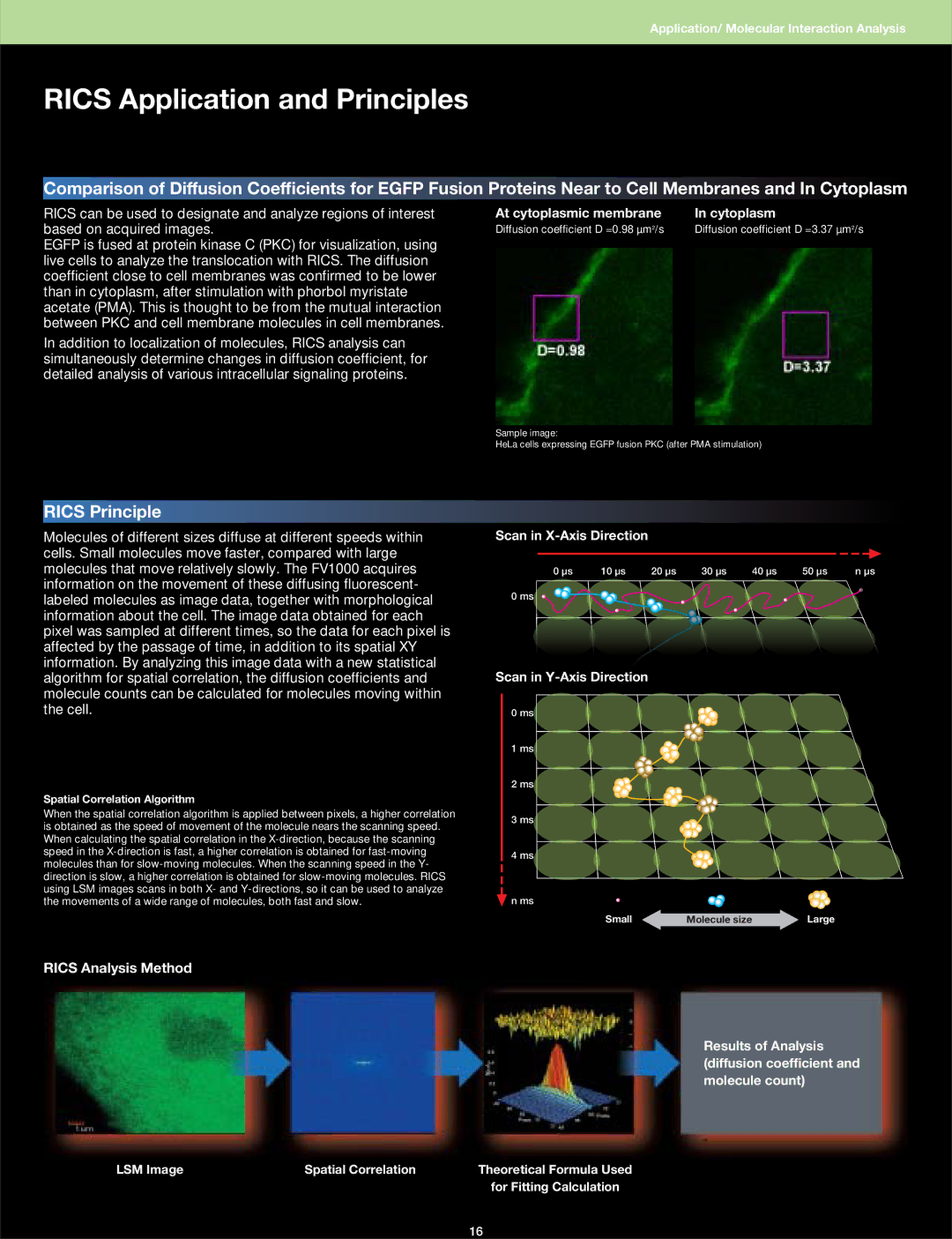
Application/ Molecular Interaction Analysis
RICS Application and Principles
Comparison of Diffusion Coefficients for EGFP Fusion Proteins Near to Cell Membranes and In Cytoplasm
RICS can be used to designate and analyze regions of interest | At cytoplasmic membrane | In cytoplasm |
based on acquired images. | Diffusion coefficient D =0.98 µm2/s | Diffusion coefficient D =3.37 µm2/s |
EGFP is fused at protein kinase C (PKC) for visualization, using live cells to analyze the translocation with RICS. The diffusion coefficient close to cell membranes was confirmed to be lower than in cytoplasm, after stimulation with phorbol myristate acetate (PMA). This is thought to be from the mutual interaction between PKC and cell membrane molecules in cell membranes.
In addition to localization of molecules, RICS analysis can simultaneously determine changes in diffusion coefficient, for detailed analysis of various intracellular signaling proteins.
Sample image:
HeLa cells expressing EGFP fusion PKC (after PMA stimulation)
RICS Principle
Molecules of different sizes diffuse at different speeds within cells. Small molecules move faster, compared with large molecules that move relatively slowly. The FV1000 acquires information on the movement of these diffusing fluorescent- labeled molecules as image data, together with morphological information about the cell. The image data obtained for each pixel was sampled at different times, so the data for each pixel is affected by the passage of time, in addition to its spatial XY information. By analyzing this image data with a new statistical algorithm for spatial correlation, the diffusion coefficients and molecule counts can be calculated for molecules moving within the cell.
Spatial Correlation Algorithm
When the spatial correlation algorithm is applied between pixels, a higher correlation is obtained as the speed of movement of the molecule nears the scanning speed. When calculating the spatial correlation in the
Scan in
0 µs | 10 µs | 20 µs | 30 µs | 40 µs | 50 µs | n µs |
0 ms
Scan in
0 ms
1 ms![]()
2 ms![]()
3 ms![]()
4 ms![]()
![]() n ms
n ms
Small | Molecule size | Large |
RICS Analysis Method
Results of Analysis (diffusion coefficient and molecule count)
LSM Image | Spatial Correlation | Theoretical Formula Used |
|
| for Fitting Calculation |
16
